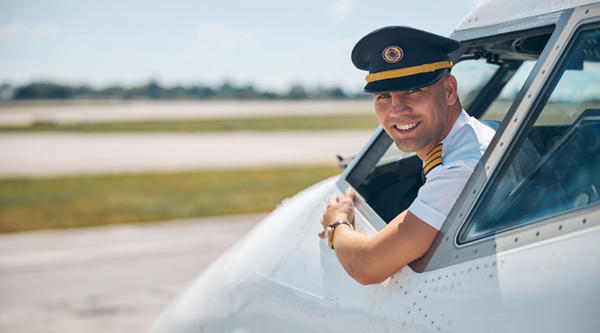 If you ever wondered what it takes to become a jet charter pilot, it’s having the resolve to take the road less traveled. Most aviation students head to commercial airlines or the military, but being the life of a jet charter pilot offers a different experience.
If you ever wondered what it takes to become a jet charter pilot, it’s having the resolve to take the road less traveled. Most aviation students head to commercial airlines or the military, but being the life of a jet charter pilot offers a different experience.
Corporate jet charter pilots are educated similarly to other pilots. Nearly 70% hold a bachelor’s degree and 15% hold master’s degrees, with majors ranging from aviation to aerospace engineering. You must have your private pilot and commercial pilot license (CPL) as well as an instrument rating to work as a charter pilot. To captain a turbo prop or jet aircraft, an Airline Transport Pilot (ATP) certification is required. But after you’re trained, how do you get started in the business?
1. Find a jet charter company you would like to serve.
All jet charter companies are not the same! They serve different clientele, fly to different areas, have different corporate cultures, and have different approaches to their business. Before you apply, do your research on the jet charter company you are considering. Look at their website and social media profiles to get a flavor for how they treat their employees and customers, so you know if you are the right fit for the company.
2. Build flight hours.
Most charter companies require their pilots to log more hours than commercial pilots. The best way to get hired is to apply with more flight hours than you need, and a minimum of 1,500 hours. The higher, the better. Some of our pilots have thousands of more flight hours from their experience flying with commercial airlines or in the military.
3. You must be ready to fly “on demand.”
Being a jet charter pilot means you may not have a regular schedule. You may fly every day or once a week depending on the jet charter company and their needs. Your flights may be cross-state, cross-country, or international. FAA requirements affect your schedule as well. Pilots are required to have a 10-hour rest periods between flights, with eight of those hours designated for sleep.
4. You must keep up your certifications.
We look for pilots who are ready and eager to keep learning and stay updated on flight technology and accumulating flight hours. Before becoming a “pilot in command,” a charter pilot must have a range of flight hours in the make/model of the plane they will command. They must have a line check (exam) and be current with their instrument flight check with an authorized check pilot.
Charter companies typically send their pilots to the specific aircraft schools to receive this training. It is a bonus for the charter company if the pilot has already been trained on the charter operation’s specific aircraft. It is more costly for charter companies to send pilots for initial certification than recertification, so the more training you bring to a charter company, the more desirable you may be.
After a pilot has their initial or recurrent flight school training, they must pass an instrument check ride (oral and flight test) and three take-offs/landings in the same type, class and category of aircraft within three months of the scheduled charter.
5. You must have good people and communication skills.
Aviation skills are top priority, but to become a jet charter pilot, customer service is a must. Unlike commercial pilots or cargo pilots, the person in the cockpit of a jet charter has contact with passengers in a very personal way. They interact with customers one-on-one and need to possess a certain level of emotional intelligence and heart.
At RAI Jets, our jet charter pilots are safe, skilled, and of the highest character. They come from diverse backgrounds, with military as well as non-military aviation experience. The safety ratings that we have (Wyvern and Argus) are given because of the pilots we choose and the staff we employ. If you’re a jet charter pilot and interested in working with RAI Jets, we would love to speak with you at 800-247-2834 or email us info@FlyRAI.com

Leave A Comment